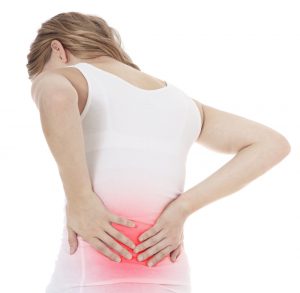Misconceptions about low back pain

Un texte de Amy Rogerson
Paru dans le numéro Printemps/Spring 2019
Publié le : 25 février 2019
Dernière mise à jour : 31 octobre 2020
By Karine Tcholkayan and Amy Rogerson Low back pain (LBP) is extremely common in the general population, but unfortunately it seems to be fraught with misconceptions on its management. One of the challenges we face as clinicians is to address beliefs that sometimes contrast with the best ways to manage the condition. Enduring episodes of…
By Karine Tcholkayan and Amy Rogerson
Low back pain (LBP) is extremely common in the general population, but unfortunately it seems to be fraught with misconceptions on its management. One of the challenges we face as clinicians is to address beliefs that sometimes contrast with the best ways to manage the condition.
Enduring episodes of acute low back pain can cause distress and anxiety regarding one’s health. There is growing evidence that people’s beliefs and behaviour regarding their LBP influence their level of disability more than the intensity of their pain. Today’s column will focus on addressing five most commonly reported myths on LBP.
“I hurt my back. I will have to deal with this all my life”
Although people who injure their backs can initially experience high levels of pain, many will be able to return to work and hobbies within a few weeks with continuing progress into the following months. Simple basic advice can help manage pain and avoid recurrences. Only a minority of people will develop long-lasting pain that can cause more serious disability. People suffering from high levels of distress, anxiety and fear of movement are more at risk of developing persistent pain. However, when these risk factors are addressed early on, the potential for recovery improves significantly.
“I hurt my back. I’d better stay in bed”
Just like any new injury, it is important in the first few days to avoid any aggravating activities. There is however, mounting evidence that complete bed rest is more harmful for recovery and can actually INCREASE your level of pain. A gradual return to hobbies, work and general activity, even while it is still a little sensitive, seems to be sound advice for optimal recovery. You spine is made to move!
“The worse my pain is, the more damage I must be causing to my spine”
Although this one might feel less intuitive, we often use the expression hurt does not equal harm to explain that the level of pain felt does not always correlate well with the degree of tissue damage. Many factors can influence our pain perception such as, the context of the injury, your previous pain experience, your mood, fears and beliefs regarding your injury, your fitness and stress level and your coping strategies. This is particularly true when it comes to persistent pain. A trained healthcare professional can help people with persistent pain develop a plan for graded return to activity and help distinguish between hurt and harm.
“My back pain is due to something being out of place”
A very common misconception regarding LBP is that something in your spine or pelvis must be displaced. In fact, there is very little evidence that minor structural asymmetries are related to pain. Many people however, will report feeling relief from manipulating or “popping” joints. It is now understood that the relief associated with joint manipulation has more to do with calming the nervous and muscular system, allowing easier joint movement rather than putting something back in its place. In some specific cases, when mobility is restricted, these types of treatments combined with appropriate reassurance and education can be useful to calm things down.
“I hurt my back. I need a scan or x-ray…”
In the majority of LBP cases, diagnostic imaging such as x-rays or scans are not necessary and often do not help guide the treatment plan. They are most often useful when signs of more serious problems are present and need to be ruled out. A simple clinical exam can guide clinicians to the relevance of pursuing with a diagnostic test. One of the main challenges related to these types of examinations is that the scan or x-ray of many adults will show degenerative changes like arthritis and bulging discs but with NO LBP. It is therefore sometimes hard to determine whether these changes are at all related to a person’s pain.
There is no simple recipe in the treatment of LBP but the general consensus highlights the following points. If you are suffering from LBP for the first time, get yourself screened by your healthcare provider. Although pain may be intense initially, it is not always related to serious tissue damage and diagnostic imaging will be prescribed in very specific cases. Most people with LBP should avoid bed rest and return to their usual activities as soon as possible. Your healthcare provider or physio can offer you sound advice on how to protect your low back in the initial phase of recovery. People who experience persistent LBP can benefit from a supervised exercise program that addresses their attitudes or beliefs regarding their pain and physical activity.
Karine Tcholkayan and Amy Rogerson are registered physiotherapists, both hold a Master’s degree in Physiotherapy and Bachelor of Science in Exercise Science. They both practice at Sport Physio in Knowlton.

